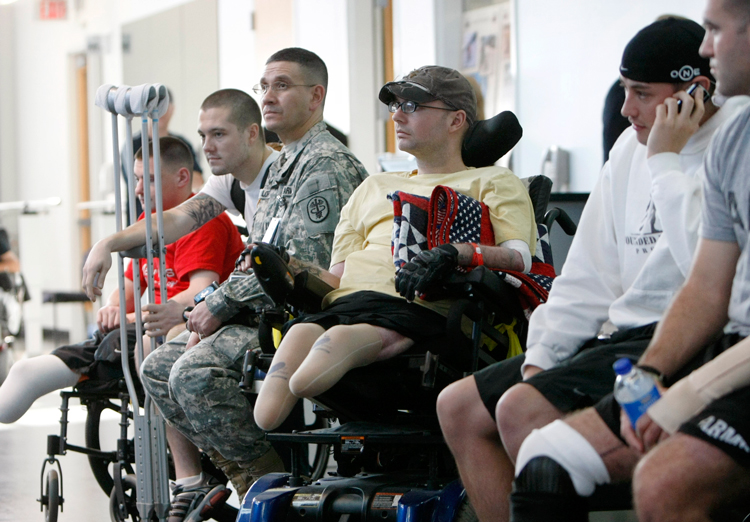Hundreds of thousands of veterans filing disability claim appeals wait years, and sometimes a lifetime, for the Department of Veterans Affairs to rule on their cases. One in 14 veterans dies before getting a decision — or any badly needed help, according to the Government Accountability Office.
With improvements in surgical techniques and body armor, a much higher number of soldiers deployed in Iraq and Afghanistan are surviving improvised bomb attacks that in the past would have been fatal.
“They’re being kept alive at unprecedented rates,” David Cifu, a VA rehabilitation doctor, told Associated Press. “More than 95 percent of troops wounded in Iraq and Afghanistan have survived.”
These veterans return from multiple tours of duty with a much greater number of injuries than in previous wars and find a bureaucratic Veterans Affairs system placing all kinds of obstacles in the way of getting medical care and benefits. Some 45 percent of veterans who served in Iraq and Afghanistan have filed for disability benefits, double the rate from the Gulf War in the early 1990s.
The Department of Veterans Affairs pays out more than $78 billion each year to nearly 5 million people. But nearly 500,000 have been denied benefits.
The disability filing process is complex. Veterans with multiple injuries — those injured in Iraq and Afghanistan each have an average of about eight — must get a separate investigation and ruling on each one. Do they really exist, were they caused by military service? And as rulings on claims stall for years, or sometimes decades, medical conditions may worsen and then a new round of documentation has to be presented.
In 2017, more than 90,000 cases were appealed to the VA board and 57 percent of them not approved, according to VA statistics. Given this cumbersome process “a lot of veterans don’t appeal,” or get discouraged through this process, Bart Stichman, executive director of the National Veterans Legal Services Program, told the Wall Street Journal.
Errors made by the VA have led to hundreds of thousands of appeals. This has resulted in nearly half of cases being sent back by the Board of Veterans Appeals for “fixes,” and more waiting time with no benefits.
In April, a federal Court of Appeals overturned a 19-year-old decision that said veterans had to have a discrete and clear medical diagnosis connected to any pain they are suffering to be eligible for disability payments. This decision was the basis for rejecting at least 11,000 VA claims, the Military Times reported.
The case was brought by National Veterans Legal Services Program on behalf of Army veteran Melba Saunders, who served in the first Gulf War. She injured her knees during seven years of service. When she applied for disability benefits her claim was denied, with the Board of Veterans Appeals citing this previous court case that held that “pain alone is not a disability for the purpose of VA disability compensation.”
“The new court ruling erases that precedent, at least for now,” noted the Times. “Veterans still need to show a clear connection between their pain and their military service to be eligible, but would no longer have to have a specific medical reason for the pain to apply for benefits.” As of August there were some 238,000 appeals caught up in the system, the VA admits. The department projects processing about 80,000 this year.
The same horrendous situation exists for civilians applying for Social Security disability from disease or old injuries. Here the bureaucratic red tape is stretched even longer. First you file your application. Recent Social Security Administration statistics show only 21 percent of applications are approved. This figure has been falling for a decade or so. If you are denied and don’t give up, then you have to file for reconsideration. The approval rate on reconsideration has fallen to 2 percent.
If you’re still kicking, and still haven’t given up, then you can file for a disability hearing, ususally a 20-minute affair. The approval rate at these hearings improved by a mere 11 percent. You do a lot better if you can hire an attorney. The average time to go through these three stages is two to three years. All in all, no matter how you try, the overall approval rate is just 34 percent.


